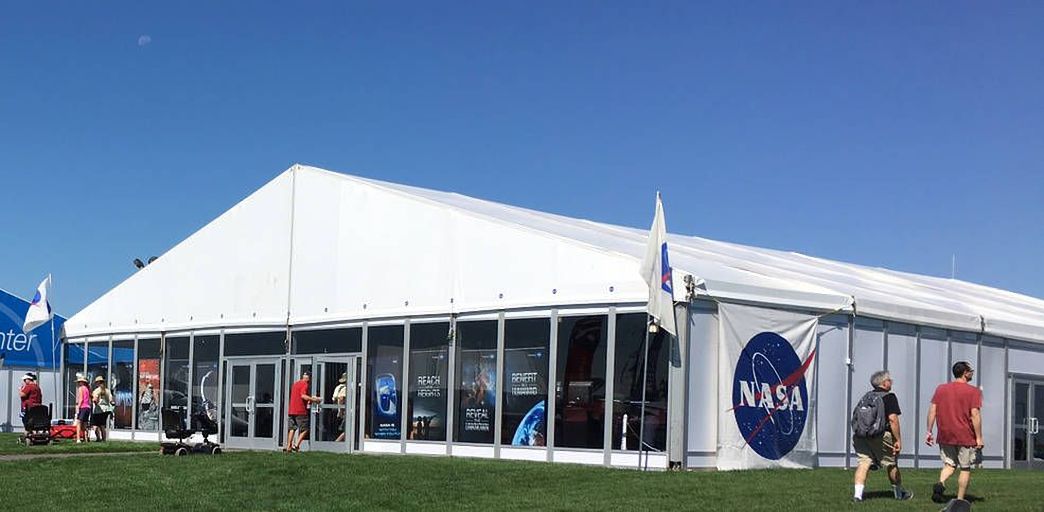Visitors to AirVenture Oshkosh 2018 can get a close look at the latest in NASA aerospace technology during the Experimental Aircraft Association’s annual airshow Monday, July 23, through Sunday, July 29, at Wittman Regional Airport in Oshkosh, Wisconsin.
The NASA Exhibit Pavilion, located in Aviation Gateway Park, will be packed with exciting interactive simulators, models, displays, exhibits and videos that highlight the truly groundbreaking work happening at NASA centers across the country. Aerospace experts will be there to discuss the exhibits and answer questions about their role working with NASA’s research and technology.
Visitors can learn about NASA’s all-electric X-57 Maxwell and the recently-announced supersonic X-59 QueSST aircraft, and have a chance to meet NASA test pilots who will fly these aircraft. The X-57 takes to the skies in 2019 to demonstrate how electric propulsion can be 500 percent more efficient than conventional aircraft. The X-59 will fly in 2023 and demonstrate how the latest technology can reduce the loud sonic boom typically associated with supersonic flight to a soft thump.
Visitors also will have the opportunity to try their hand flying the same simulators that NASA pilots and engineers use as they train to fly these X-planes. Among these will be a newly-integrated simulator for the Improved Ground Collision Avoidance System. This simulator features a system based on the highly successful Automatic Ground Collision Avoidance System (Auto-GCAS) that was integrated into many F-16s flown today and is credited with saving several pilots and aircraft.
Also available are exhibits showcasing NASA’s work with unmanned aerial vehicles and aircraft icing research, as well as its Space Launch System and Earth science missions.
NASA’s Glenn Research Center will display the last S-3B Viking to fly that the agency used for research into engine icing, communications systems development for unmanned aircraft systems in the national airspace ,and algae bloom monitoring on Lake Erie.
On Thursday, July 26, NASA’s Armstrong Flight Research Center will display an F-18, flown primarily to support the agency’s Commercial Supersonic Technology project. The aircraft will be deployed to Galveston, Texas, in November to help engineers better prepare for X-59 testing.
Engineers, pilots and project managers also will give forum talks throughout the week on the exciting work taking place across the agency. For a full rundown of these forum talks, visit https://go.nasa.gov/2zT54Bl and enter the filter word “NASA.”
For information about NASA’s aeronautics research, visit:
-end-
J.D. Harrington
Headquarters, Washington
202-358-5241
j.d.harrington@nasa.gov
Matt Kamlet
Armstrong Flight Research Center, Edwards, Calif.
661- 276-2330
matthew.r.kamlet@nasa.gov

























